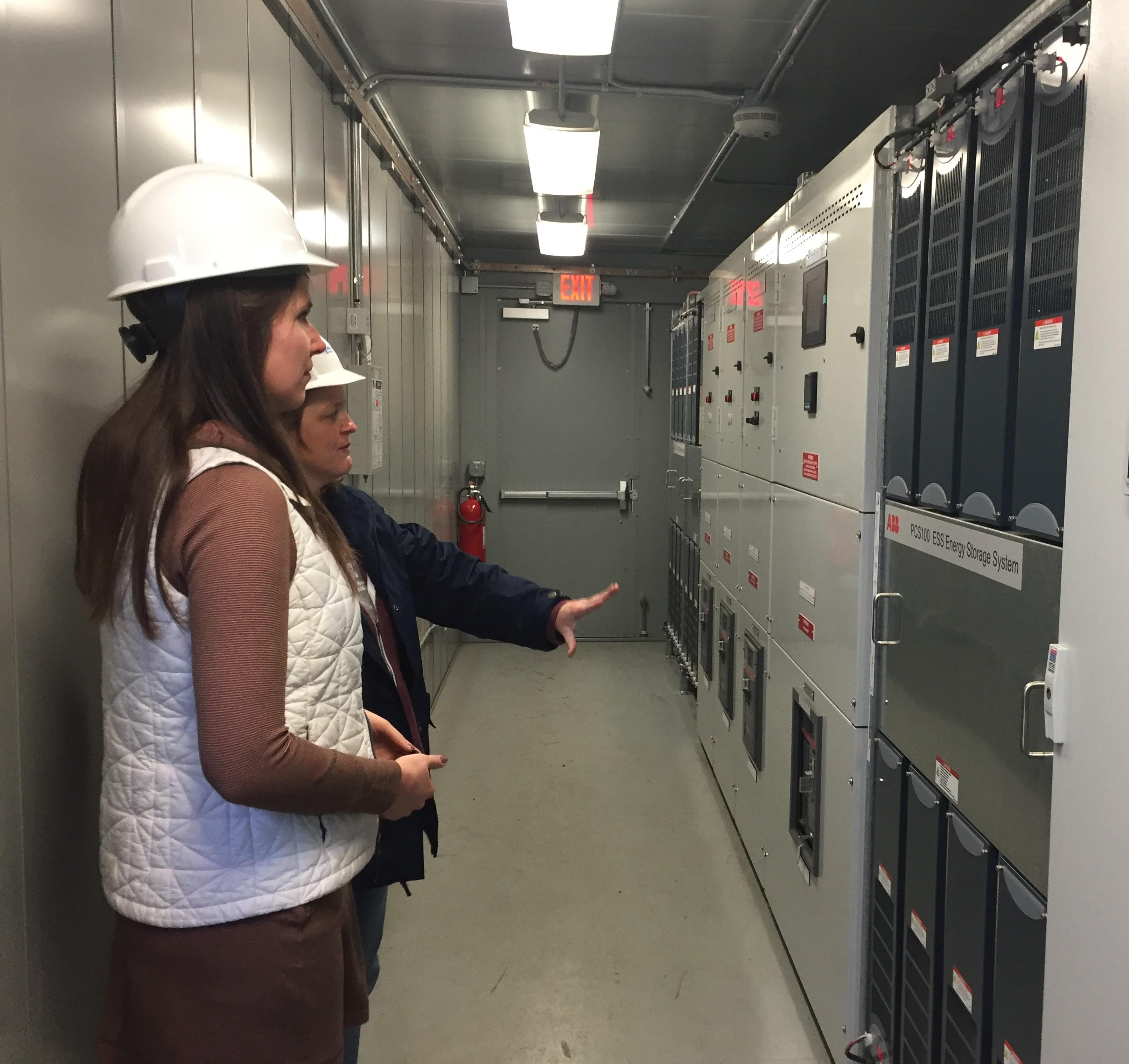Flywheel and Battery Smooths Variable Wind Energy

ACEP research engineer Jeremy Vandermeer and undergraduate student researcher Grace Bolt are working with Chugach Electric Association and technology company ABB to test the performance of CEA’s multi-stage energy storage system. The system buffers variable renewable energy sources, specifically the output of the 17.6-megawatt Fire Island wind farm.
CEA originally received funding from the Alaska Energy Authority to install a 1-MW flywheel and a 2-MW ABB lithium-ion battery system in 2017 as part of the Emerging Energy Technology Fund Round 2 grant program. The current project builds on the initial installation and testing of the EETF Round 2 project and is funded by CEA.
If the energy storage system is successful, it will open possibilities for installation
of additional wind power on the grid by:
- Injecting or absorbing power from the grid to limit the effective wind farm ramp
rate. This capability gives other generating sources on the grid more time to respond
to changes in the wind.
- Helping to keep grid frequency within bounds by injecting or absorbing power when
the grid frequency dips or rises from its nominal 60 hertz.
- Reducing area control error by injecting or absorbing power with negative or positive
ACE. ACE is the difference between the power that CEA is scheduled to send to other
utilities on the railbelt grid and what it actually ends up sending.
Each of these control modes is being tested to verify that it operates according to its control specifications and to quantify its benefit to the grid. Evaluating the benefit of the grid frequency support is particularly challenging, as it is affected by all the loads and generation on the grid.
To address this challenge of evaluating the benefit of the grid frequency support, ACEP and CEA are using a technique developed by the Hawaii National Energy Institute and the Hawaii Electric Light Company. During the test, the energy storage frequency support is alternatively enabled and disabled for 20-minute intervals, and frequency deviations in adjacent intervals are compared with each other. These tests will help remove the influence of other sources of generation and loads from the test results and focus on the influence of the energy storage system on system frequency.
ACEP student researcher Grace Bolt, left, talks with Chugach Electric Association controls engineer Steffanie Crabtree during a tour of CEA’s 1-MW flywheel and 2-MW battery energy storage system. Bolt and ACEP research engineer Michelle Wilber learned of changes the association is making to improve the system. Photo by Michelle Wilber.



